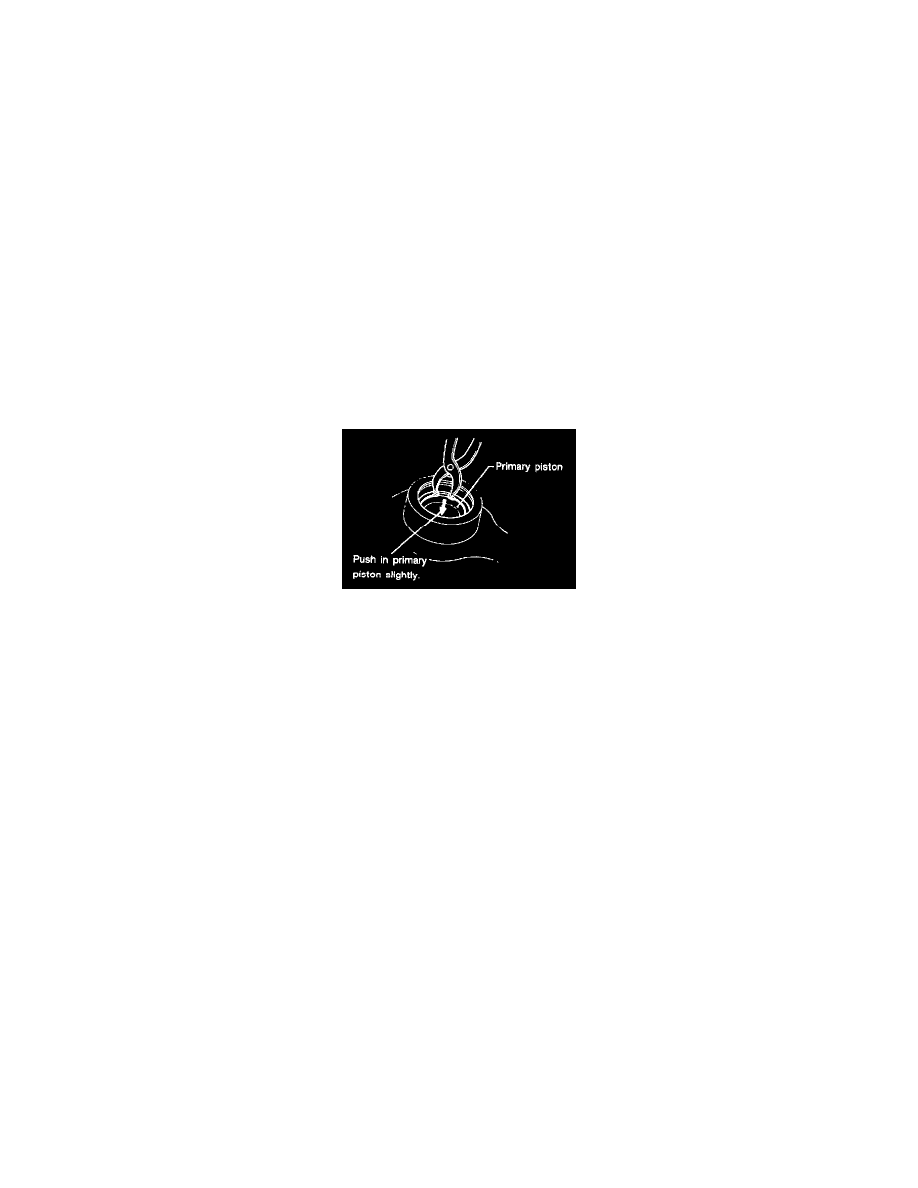Impreza L Sedan F4-2.2L SOHC (1997)

Brake Master Cylinder: Service and Repair
REMOVAL
1. Thoroughly drain brake fluid from reservoir tank.
2. Disconnect fluid level indicator harness connector.
3. Remove brake pipes from master cylinder.
4. Remove master cylinder mounting nuts, and take out master cylinder from brake booster.
CAUTION: Be extremely careful not to spill brake fluid. Brake fluid spilt on the vehicle body will harm the painted surface; wipe it off quickly if
spilt.
DISASSEMBLY
PRECAUTIONS FOR DISASSEMBLING:
1. Remove mud and dirt from the surface of brake master cylinder.
2. Prepare tools necessary for disassembly operation, and arrange them neatly on work bench.
3. Clean work bench.
4. Tools for disassembly operation:
-
Phillips screwdriver
-
C-ring pliers
DISASSEMBLING PROCEDURE
1. Remove supply valve stopper. (Only vehicle equipped with ABS).
2. Remove C-ring with C-ring pliers pushing in primary piston slightly.
NOTE: Piston may jump out from master cylinder.
3. Extract primary piston assembly and secondary piston assembly.
CAUTION:
-
Do not disassemble the piston assembly; otherwise, the spring set value may be changed.
-
Use brake fluid or methanol to wash inside wall of cylinder, pistons and piston cups. Be careful not to damage parts when washing. If methanol
is used for washing, do not dip rubber parts, such as piston cups, in it for more than 30 seconds; otherwise, they may become swelled.
INSPECTION
If any damage, deformation, wear, swelling, rust, and other faults are found on the primary piston assembly, secondary piston assembly, supply
valve stopper, or gasket, replace the faulty part.
CAUTION:
-
The primary and secondary pistons must be replaced as complete assemblies.
-
The service limit of the clearance between each piston and the master cylinder inner diameter is 0.11 mm (0.0043 inch).
-
When handling parts, be extremely careful not to damage or scratch the parts, or let any foreign matter get on them.
ASSEMBLY
PRECAUTIONS FOR ASSEMBLING
1. When assembling, be sure to use recommended brake fluid.
2. Ensure that the inside wall of cylinder, pistons, and piston cups are free from dirt when assembling.
3. Be extremely careful not to damage, scratch, or dent cylinder inside wail, pistons, and piston cups.
4. Do not drop parts. Never attempt to use any part that has been dropped accidentally.
ASSEMBLING OPERATION
1. Assembling piston assembly:
Apply recommended brake fluid to inside wall of cylinder, and to outer surface of piston assembly, and install piston assemblies carefully into
cylinder.
